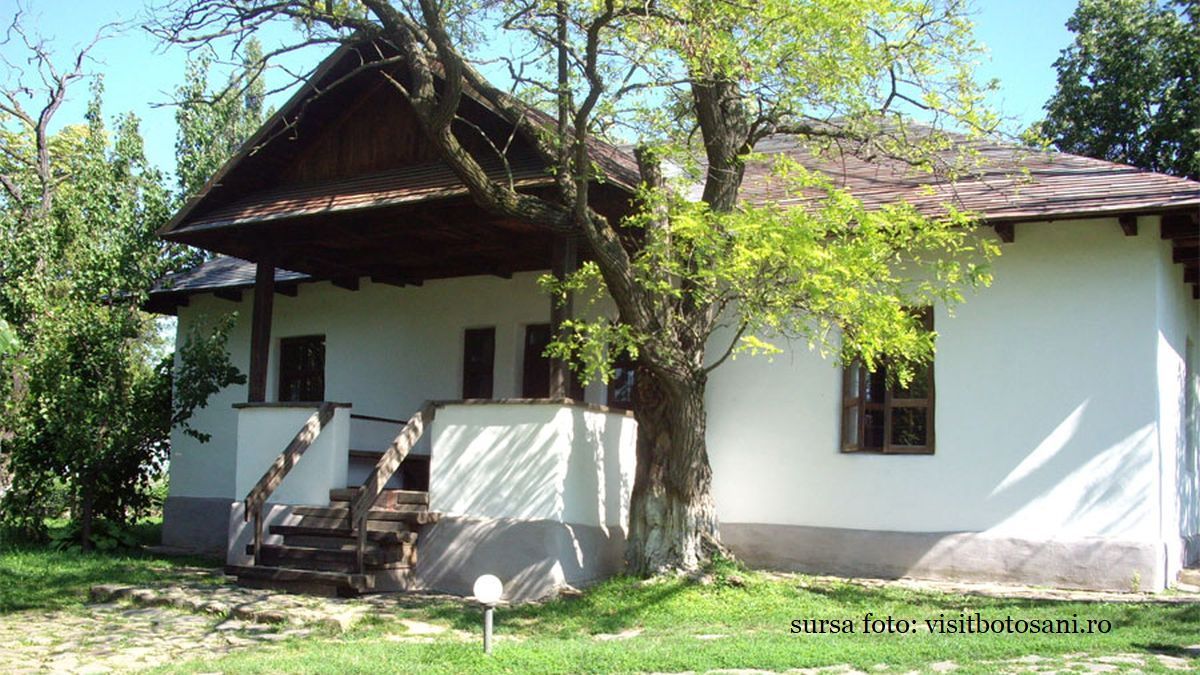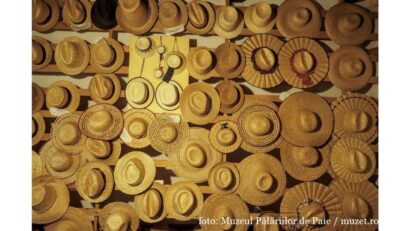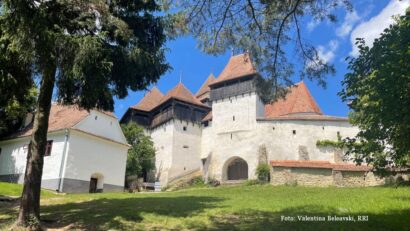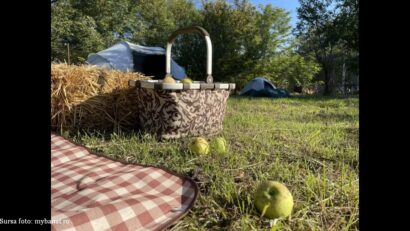History, culture and entertainment in Botoșani
You are warmly invited to discover an area steeped in history and tradition.

Daniel Onea, 22.05.2025, 14:00
Botoșani County is a destination where history, culture and nature intertwine, offering visitors a genuinely Romanian experience, a region less known to the public, although steeped in tradition. The area also offers a variety of options in terms of leisure tourism, combining relaxation, sports and outdoor fun, from skating and climbing, rafting on an artificial river to outdoor swimming pools.
2025 brings a few novelties for tourists targeting this area. Special attention is paid to promoting the great poet Mihai Eminescu, born in Botoșani, as Florentina Gheorghiță, the director of the National Center for Tourist Information and Promotion, told us.
“We have created a new visiting route, following the poet’s footsteps. This tour of the city is marked with granite slabs on which all the stanzas of the poem ‘Luceafărul’ (The Evening Star) are engraved. By following these slabs, you will discover information about all the venues that were part of the great poet’s life: he was a prompter, an actor, he worked as a copyist at the city hall, he would take walks in the park that now bears his name. Of course, apart from all that, you will find an ethnographic museum, the ‘Nicolae Iorga’ Memorial House. And finally, if you’re looking to relax, you can spend some time at the Aqua Park, located on the city outskirts. A pool, a SPA area or, in winter, an indoor skating rink awaits. The Park is unique because it has both indoor and outdoor swimming pools, an indoor skating rink, four tennis courts and two indoor mini-football fields in winter, which are also available during summer. It has playgrounds for children of different ages. There is a large lake and an artificial river for rafting, the third of its kind in Europe and unique in Romania. In the summer you can rent pedal boats. If none of these activities appeal to you, then we invite you to take a walk in the 48-hectare park”.
The starting point for the new city tour is the Tourist Information Center in the old town. Florentina Gheorghiță:
“Before we reach the first stanza of Eminescu’s poem, there’s a totem that points us in the direction of an alley which used to host a lot of cafés in the great poet’s time. We know that Mihai Eminescu was a coffee lover and would definitely stop at one of the coffee shops. Then, at milestone number two, we find the restaurant where he liked to spend his evenings relishing a glass of wine, singing along to fiddler tunes and write his amazing poems. Then the route takes us to the place where the poet was born, the church where he was baptized and other very important buildings, before ending in Mihai Eminescu Park. Here, you can take photos next to two statue ensembles, the first depicting Mihai Eminescu and his love interest, Veronica Micle, the second up on a hill behind the park, in a gazebo, where you can sit next to the great poet”.
The city of Botoșani, in northern Moldavia, is home to an extensive network of underground tunnels and medieval catacombs, which have been recently recognized by scientific research, promising to become a tourist attraction of European importance. The network is believed to be several kilometer long, connecting different areas of the city to the Popăuți Monastery, founded by Stephen the Great in late 15th-century. The old town is also dotted with these underground galleries, built on two or three levels. The tunnels have been mentioned in local legends for centuries, but their existence has only recently been proven thanks to an EU-funded project, using advanced high-frequency electromagnetic wave technology. Florentina Gheorghiță, head of the National Centre for Tourist Information and Promotion, told us more about the development of new tourist areas.
“We have news in this respect as well, following another project that scanned the cellars, which used to be a matter of legends, something mentioned in the elders’ stories. We managed to detect the connecting tunnels between the buildings in the old centre. In one of the cellars, a museum of communities was created, as Botoșani was a cosmopolitan city. It was created through collaboration between several communities: Jews, Armenians, Lipovan Russians, Roma, even Greeks. Therefore, in this cellar we highlighted these communities. Another project will follow, also in the underground side: a museum of personalities. We have George Enescu, who is very well known worldwide. Mihai Eminescu is also well known in certain parts of Europe and in Turkey. We were very pleased that he was very well received. We have a famed painter, Ștefan Luchian. Nicolae Iorga is also a famous historian. In addition to these, we have a lot of engineers, math teachers featured in the museum.”
Kuty pottery is found in northern Romania and is famous for its unique decoration style. The main colours are black, yellow, green and white, but with a metallic or glossy tinge, made through special firing techniques. In the city of Botoșani, tourists will find the last craftsman who makes Kuty pottery, Mr. Iacinschi.
“It is a great advantage for us that his shop is very close to the old centre. At the same time, here in the county we also have other types of craftspeople, weavers and egg painters, for instance, as well as people who make traditional masks or Romanian blouses, who weave carpets. So, we cover almost all areas. You can also meet them at events. The next one is the “Vasile Andriescu” International Festival of Folk Song, Dance and Costumes, in July 3-6, with traditional craftsmen from the area certainly taking part. Then, on June 14-15, the first edition of the North Marathon will start in the city of Botoșani. Several sites will be set up where local craftsmen and producers can present their products to those who come to this marathon.”
Florentina Gheorghiță, the head of the National Centre for Tourist Information and Promotion in Botoșani, also recommends the “Route of the Monasteries”, a project implemented two years ago. This route gives participants an insight into the medieval history of Moldavia. They will learn about great rules such as Stephen the Great (who ruled between April 14, 1457 and July 2, 1504) and Petru Rareș (January 20, 1527 to September 18, 1538), but also about the Romanian Orthodox tradition. The route can be covered by car in one or two days and includes a string of monasteries, some of them over 500 years old: Vorona Monastery, Vorona Hermitage, Coșula, famous for the Coșula yellow hue, Zosin Monastery. The road itself has also received many positive reviews from tourists, as it crosses entire areas of dense forests. (VP & AMP)






























